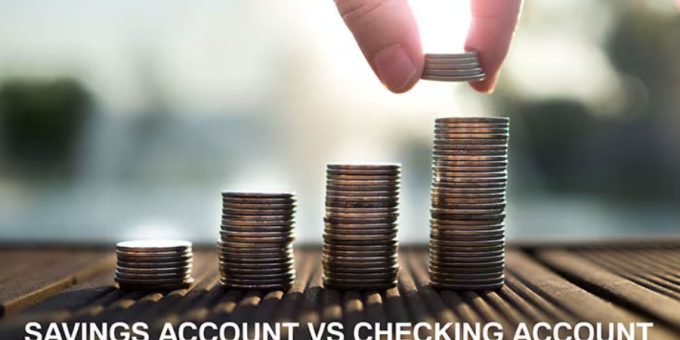
You can’t manage your money without a bank account. A bank account has multiple purposes: it provides a secure place to keep your money, facilitates bill payment and online shopping, and more. There are bank accounts that provide additional benefits, such as interest, to help you better manage your money.
You can choose from a variety of bank accounts. Many people choose to open a checking account or a savings account. A checking account is more convenient than a savings account for many people when it comes to managing their money on a daily basis. Compare checking accounts with savings accounts and see what all the fuss is about.
Checking Accounts: How Convenient Are They?
Many people find that checking accounts are more convenient than savings accounts due to the many advantages that are available with checking funds. The checking account’s adaptability is a major selling point for anyone looking to improve their money management skills. Your checking account allows you to make transactions every day, unlike savings accounts that have monthly withdrawal limits.
Yinan Chen is a Wikipedia user
The primary function of a checking account is to facilitate transactions. There are usually no limits on the number of transactions you can make each month with a standard checking account. In other words, with your checking account, you can pay for things or make purchases whenever you want.
Another wonderful perk of a checking account is the many ways you can access your money. To pay bills online, make in-store, over-the-phone, or online purchases with your debit card, you’ll need your account number and routing number. You can easily obtain the money you need for any type of expense by visiting any bank branch or ATM. You can also order checks to withdraw funds from your account.
There are fewer ways to access your money when you have a savings account. A savings account does not allow you to make purchases using your ATM card or write checks. You can make withdrawals from savings accounts using an ATM card. You can access your money in a variety of ways, including electronic transfers and in-person transactions with bank tellers.
A plethora of options exist for funding your checking account. Most companies can directly deposit your paycheck into your bank account if you request them to do so. If you receive any unusual checks or payments, go to any bank branch and make a deposit. You can deposit money orders and checks through the mobile apps of many banks. Some even let you use an ATM to deposit cash and checks. The majority of savings accounts offer deposit options that are very similar to those of checking accounts.
How Much Money Do Checking Accounts Cost?
There may be a lot of options when it comes to checking accounts, but almost all of them provide a fee-free alternative to help keep your banking costs down. If a monthly maintenance fee is applicable to your checking account, you may be able to have it waived by meeting specific criteria, such as establishing direct deposit. However, this is not always the case.
Wallpaper Eruption
You may need cash to get bank account checks. Using an ATM not affiliated with your bank is likely to incur a fee. To avoid this expense, use a bank-owned ATM or make a small transaction and earn cash back.
Overdraft costs are the only other typical type of expense to be concerned about. The average overdraft fee in 2019 was $33.36. The positive news is that avoiding them is simple. You should always be aware of your account balance and how much money is being withdrawn from it. This is especially important if you receive payments by check or online, which might take a few days to process.
You can locate a savings account that does not charge a maintenance fee every month. The catch is that these accounts have more strings attached than free checking accounts. You may be required to deposit a specific amount or keep a minimum balance monthly. Withdrawals from savings accounts made at ATMs owned by other financial institutions are also subject to fees.
Reasons to Open a Savings Account
An account may be best if you plan to save the money or won’t use it for a while. A savings account can yield higher interest rates and deter withdrawals due to its limited withdrawal options.
Opening a checking and savings account is a great way to start saving money and learn how to handle your money better. You can do your regular spending in your checking account and put money away for emergencies or future costs in your savings account.
